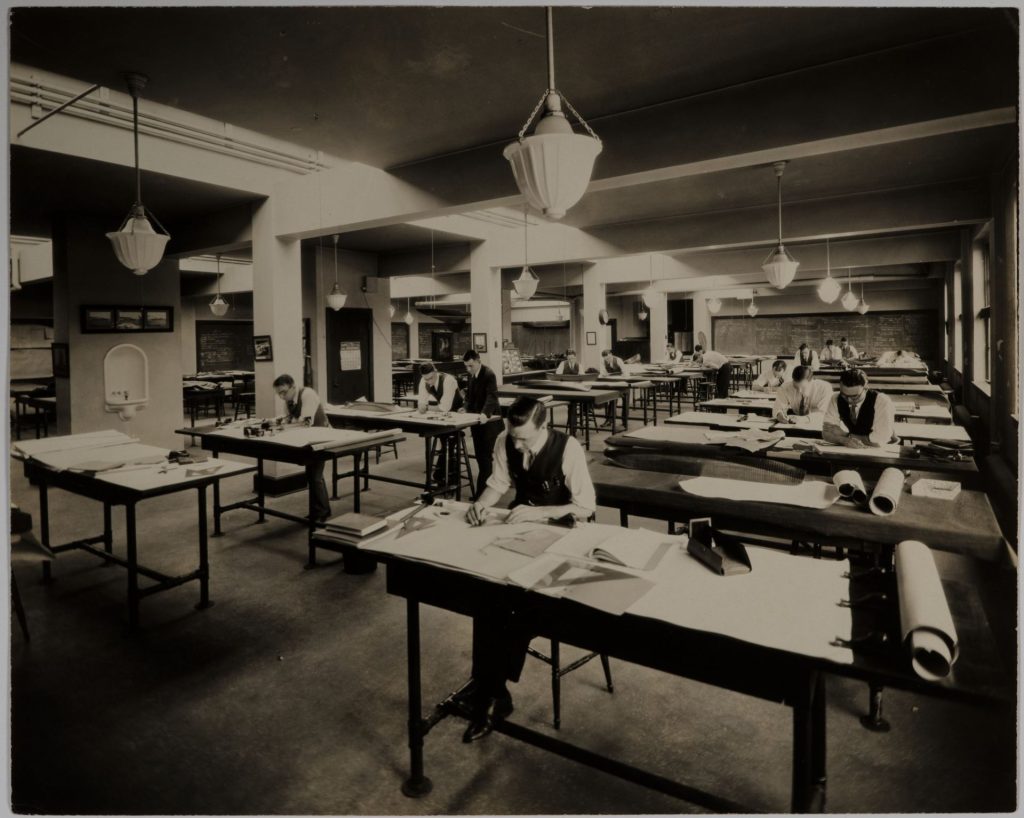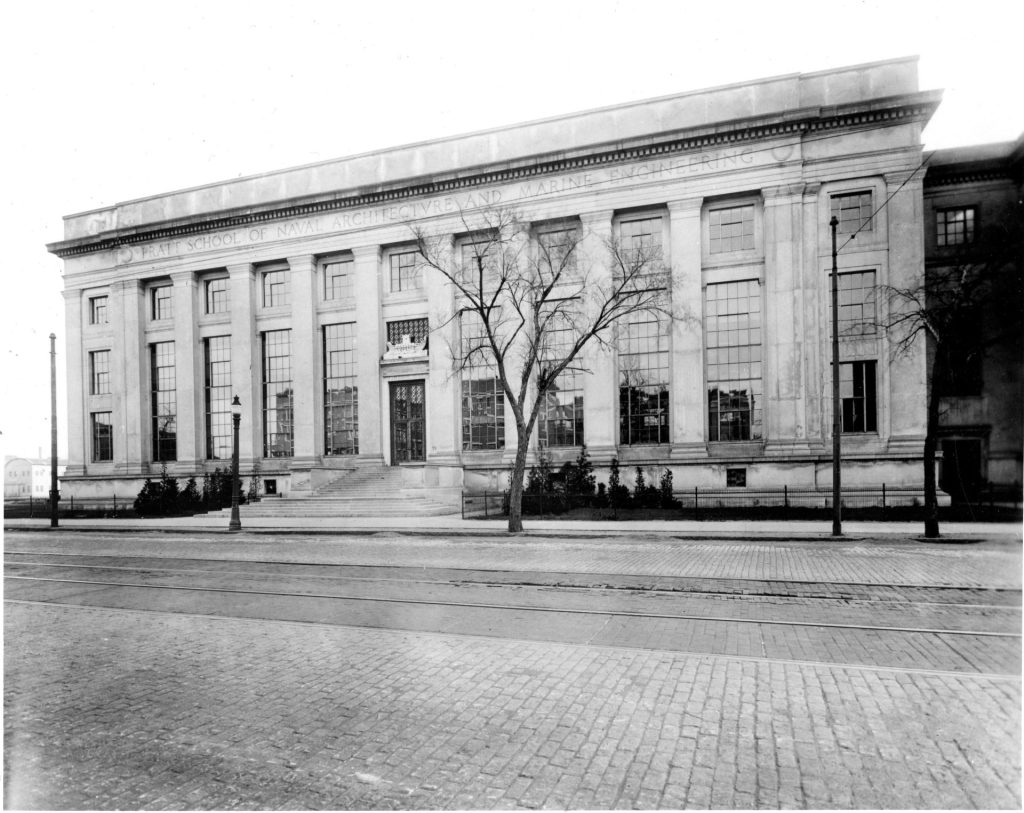In August 1897, Commodore Hichborn, the Chief Naval Constructor, requested that the Massachusetts Institute of Technology develop and offer a three-year course of study for the professional training of naval constructors. The Institute enthusiastically responded to this request and a course of study was agreed upon as satisfactory to both parties. The three years of work were designated as the Junior, Senior, and Graduate years. Successful completion of the course led to the Master of Science degree. In 1901 three graduates of the U.S. Naval Academy, Ensigns Ferguson, McEntee, and Spilman, began the course of study under the direction of Professor William Hovgaard.
After graduating in 1877 from the Naval Academy in Copenhagen and serving in the Danish Royal Navy, then Lieutenant Hovgaard was sent to the Royal Naval College in Greenwich, England, in 1883 to study warship construction. He was graduated from its three-year course in 1886 and the next year saw the publication of his first naval book, Submarine Boats. In 1901, as a Commander in the Danish Navy, he came to the United States to continue his study of the submarine and was induced by the Secretary of the Navy, John D. Long, to take charge of the new course for naval constructors at MIT. He was head of the new course, designated XIII-A, until 1933 when he retired as a professor emeritus. Professor Hovgaard resigned from the Danish Navy as a Captain in 1905. During his years as head of course XIII-A, Professor Hovgaard taught several hundred Navy officers. He authored several widely accepted textbooks, among them “Structural Design of Warships,” “General Design of Warships,” and “Modern History of Warships.”
The Naval Academy graduates sent to MIT for the course officially were attached to the Navy Yard in Charlestown and were registered as regular MIT students. The faculty maintained close relations with the chief constructor in Washington and with the constructors and top civilian staff at the Navy Yard and Fore River Ship and Engine Company in Quincy. This served two purposes. The constructors would know that the instruction at MIT was being adapted to the needs of the service and the faculty could use the work under construction at both yards to illustrate the classroom instruction. The course schedule was arranged to permit the students to spend one afternoon a week at the Navy Yard becoming familiar with methods of administration and similar matters.
The course for naval constructors differed from the regular course XIII studies in that it was more intensive, more advanced, and a large amount of attention was given to warship design. The increased time assigned made it possible to give more attention to marine engines and marine steam turbines and also give an extended course in electrical engineering. Professor Hovgaard pointed out that the course pre-supposed a general knowledge of warships and seamanship, of life on board ship, of service in the navy, and of the installation and use of artillery and torpedoes. Most of the freak designs that had been brought out and, in many cases, produced at great cost, had been created by men unacquainted with these requirements.
Since World War I, instructors in the XIII-A curriculum have also been commissioned U.S. Navy officers. The first, Professor Henry H. W. Keith, with course XIII-A from 1910-1945, was commissioned a Lieutenant Commander in the Corps of Naval Constructors during WWI. Instructor Harold Larner (1916-1917) also held a naval commission and retired as a Captain. From 1910-1945, course XIII-A relied on long term instructors such as Professors Hovgaard (Captain, Danish Navy, 1901-1933), Keith (Captain, USN, 1910-1945), and Henry Rossell (Captain, USN, 1931-1946) to lead the naval construction program. In 1945, the Navy’s Bureau of Ships inaugurated the practice of detailing two active duty officers as professors for relatively short terms (2-3 years). At any given time one officer would be a trained and experienced naval architect and the other had the same qualifications as a naval engineer. In January 2005, the Ocean Engineering and Mechanical Engineering Departments of MIT merged and course XIII-A was renamed course 2N.




